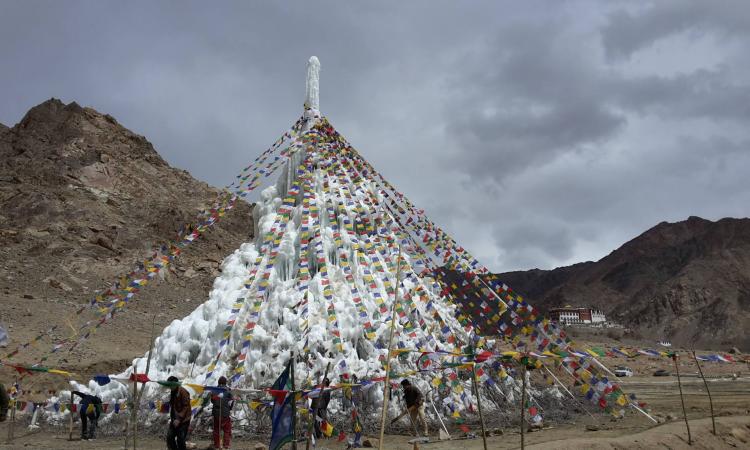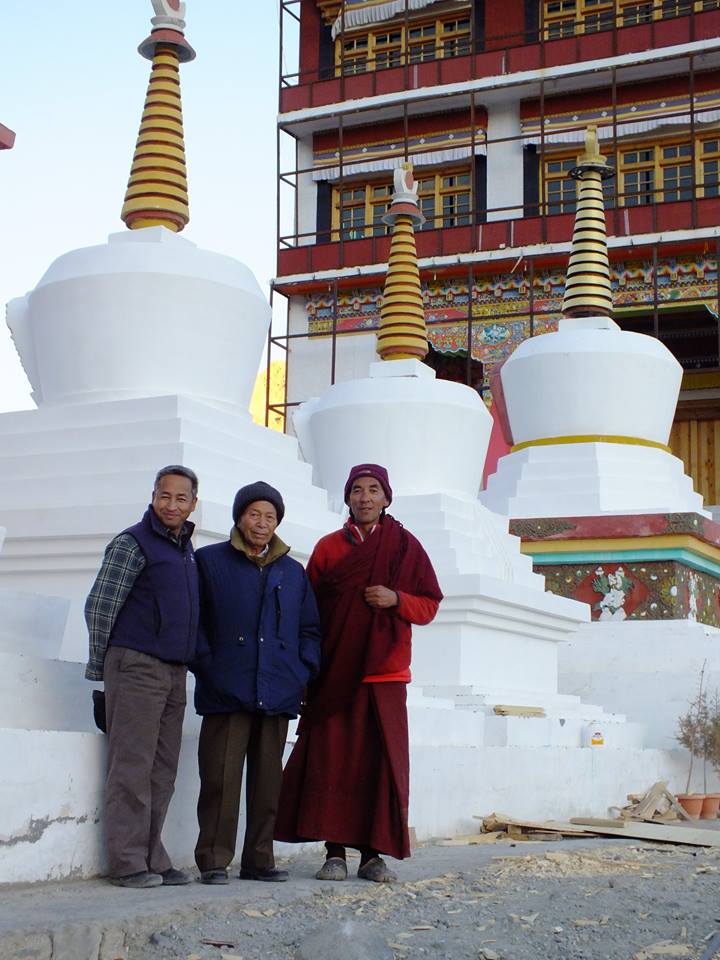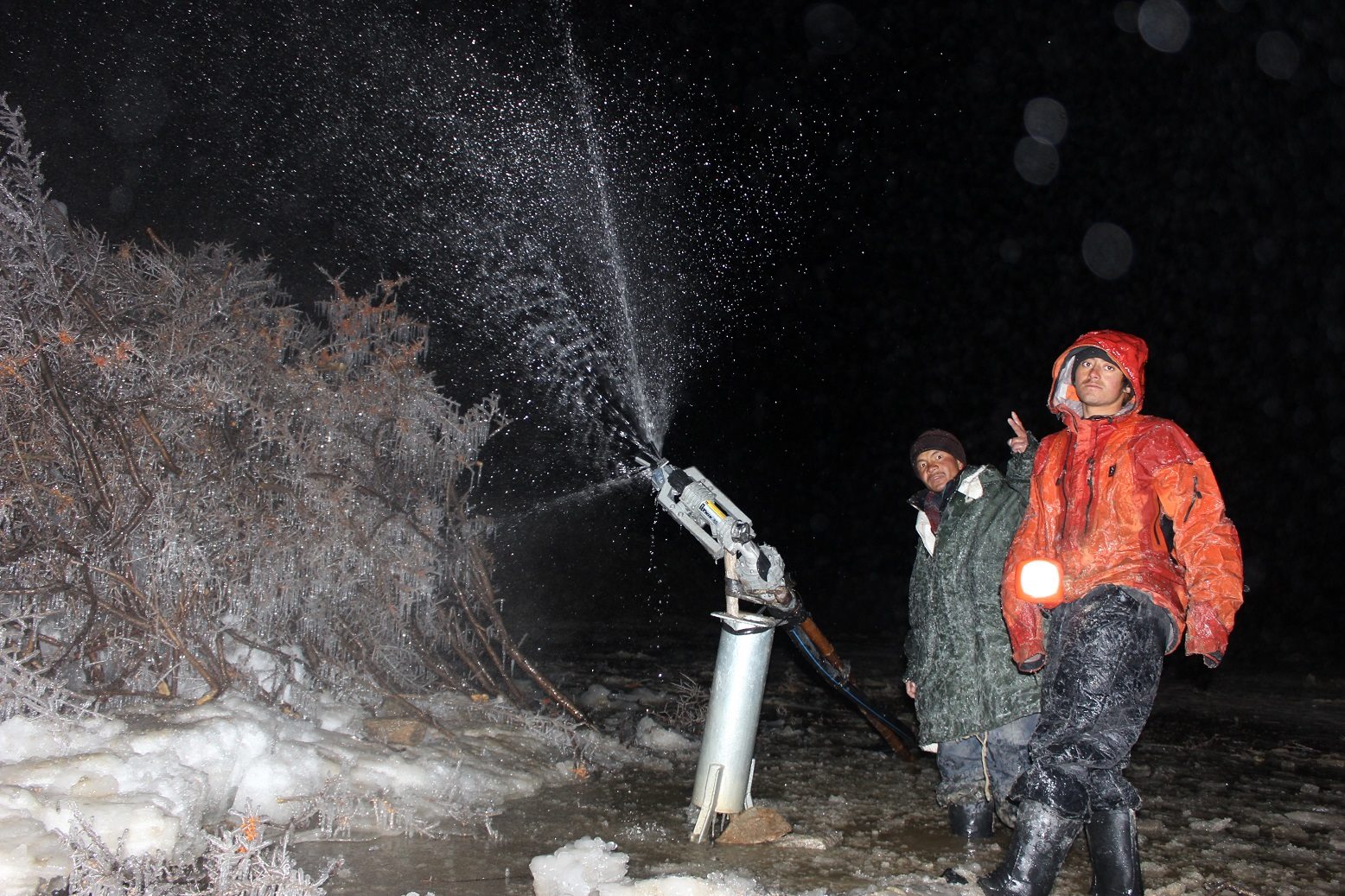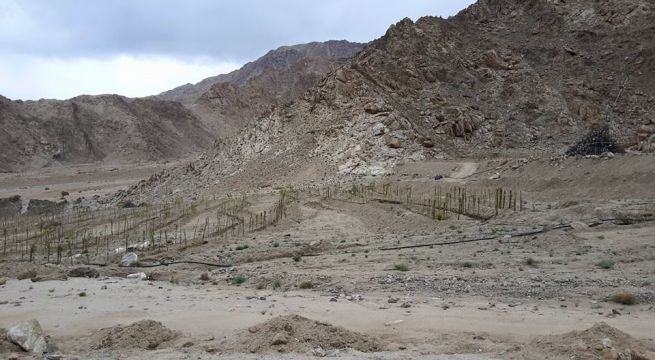
Living in the mountains
For generations, the Ladakhi people have demonstrated how to thrive and live sustainably in one of the world’s most challenging and beautiful environments. Ladakh is a mountain desert high in the Himalayas on the barren Tibetan plateau, north of India and bordering Pakistan and China. Annual rainfall is typically less than 50 millimetres, and agriculture in the region is fed almost exclusively via snow and glacial melts. However, climate change is creating shifts in the timing of these melts and precipitation. The result of these changes is little or no water in the precious spring months and subsequently the failing growing seasons impact on local food supplies and economies.
A first step for a green Ladakh

As Sonam Wangchuk, one of the founders of the The Students' Educational and Cultural Movement of Ladakh (SECMOL) says, Ladakhi’s have mastered the art of living in harmony of nature, carving oasis of green villages in dry deserts. However, the resilience of the Ladakhi people and their agricultural livelihoods are being tested by these changes. In 2014, Wangchuk and a team of students at SECMOL started a prototype phase of a unique approach to adapt to these water shortages. Adjacent to the school they took excess water from an upstream river during the winter months and directing it via gravity with the aid of pipes and sprinklers, and froze the water in the cold winter temperatures of -20 degrees Celsius. It was found that the resulting conical shape of the artificial glacier melts approximately 5 times slower than naturally formed ground ice and snow due to its comparatively smaller surface area.
The shape resembles the shape of the Buddhist mud stupas, henceforth the project has affectionately been labelled the “Ice Stupa Project”. The likeness is further emphasised through the blessing and placement of a number of colorful Buddhist prayer flags that also functionally provide shade for the ice stupa. The pilot ice stupa remained frozen at relatively low altitudes until May, storing approximately 150,000 litres and reaching a height of 6 metres without the need for concrete, electricity or dams in its production or water harvesting. The success of the project has seen the prototype scaled up to a larger stupa. Environmental advocate and head of Phyang monastery His Holiness Drikung Kyabgon Chetsang Rinpochey has provided his support and a large tract of land in Phyang to transition the project to a much larger scale, commencing in 2015. Wangchuk laid ambitious plans for 30 metres high stupas, with initial funding supported by an over-subscribed crowdfunding campaign that raised nearly USD 125,200 in 2 months.
Not an easy task

The team encountered a number of challenges in this second phase including delayed deliveries, failing pipes and frozen sprinklers resulting in a late start in ice stupa production for Wangchuk’s team. It is difficult to imagine the challenges in working with failing sprinklers at -20 degrees Celsius. Unperturbed, the second phase managed to reach a height of 20 metres, storing approximately 2 million litres--over 10 times the size of the original project. Wangchuk sees great potential in the system to store and deliver water. His target is set on multiple ice stupas in the valley at heights of 30 metres storing 10 million litres of water each. The footprint of the land available in Phyang could support 100 ice stupas, storing approximately 1 billion litres of water for a greening of the valley, food production and livelihoods.
My green, green valley
 The potential for this project to support agriculture and a greening of the currently barren Phyang valley is impressive. Ladakhi poplar and willow trees require approximately 10 litres of water a day, taking 5-6 years to reach their maximum height and selling for USD 120. Wangchuk estimates that a full sized stupa could potentially sustain up to 20,000 trees through the currently dry April to June period. This presents a crucial alternative income for local farmers. Wangchuk explains,“Supposing we are able to make 10 ice stupas next year from the current project that would mean roughly 200,000 trees. With a margin of error let us just say 100,000 trees, the income from even these many trees would be USD 12,000,000”. This represents a return over the initial crowd funded investment of just under 100 fold in five years. Additionally water is delivered at a much cheaper rate than government built reservoirs. Wangchuk estimates that the cost of delivering the water is approximately 1/20th of the cheapest government built reservoir in nearest major city of Leh.
The potential for this project to support agriculture and a greening of the currently barren Phyang valley is impressive. Ladakhi poplar and willow trees require approximately 10 litres of water a day, taking 5-6 years to reach their maximum height and selling for USD 120. Wangchuk estimates that a full sized stupa could potentially sustain up to 20,000 trees through the currently dry April to June period. This presents a crucial alternative income for local farmers. Wangchuk explains,“Supposing we are able to make 10 ice stupas next year from the current project that would mean roughly 200,000 trees. With a margin of error let us just say 100,000 trees, the income from even these many trees would be USD 12,000,000”. This represents a return over the initial crowd funded investment of just under 100 fold in five years. Additionally water is delivered at a much cheaper rate than government built reservoirs. Wangchuk estimates that the cost of delivering the water is approximately 1/20th of the cheapest government built reservoir in nearest major city of Leh.
Changing climatic conditions are undoubtedly making farming in barren Ladakh increasingly difficult. However, local innovation such as the ice stupa may be the most recent chapter in the Ladakhi people’s ability to adapt and strike out harmonious livelihoods in this harsh yet beautiful environment.